Owls
Nearly a dozen species of owls have been reported in the woods around the Lake, but all are listed as either uncommon or rare. Finding an owl in the forest is quite different from finding a mallard on the Lake or a robin on the lawn. Indeed, prior to seeing the Barred Owl in the pictures below, I had never seen an owl in the wild. And merely to find this one, I needed the help of an experienced and patient birder.
Most of the owls shown here were taken by other local photographers, but I recently managed to find and photograph a Northern Pygmy Owl, so that is progress.
Owls shown here are: Barred Owl; Northern Pygmy Owl; Great Grey Owl; Great Horned Owl; Northern Saw–whet Owl.
Barred Owl
Strix varia
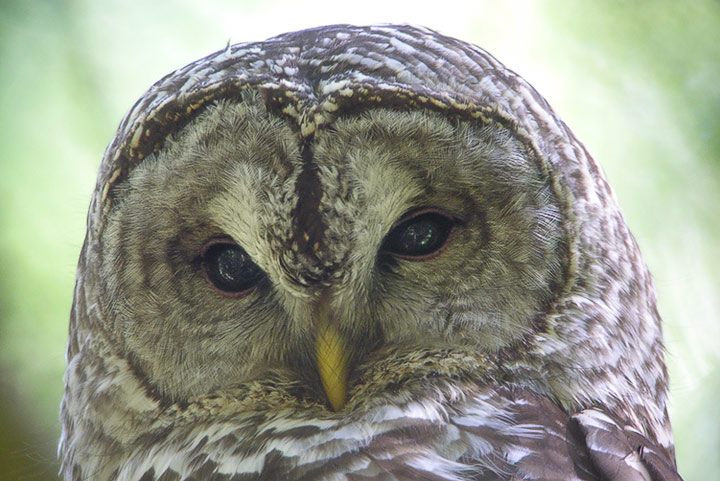 The Barred Owl (also known as the Hoot Owl) hasn’t always been seen around the Lake, or even in British Columbia. It began expanding its range into the Province in the 1940s and has largely replaced that long-time resident, the Spotted Owl; it also seems to outcompete the Screech Owl. The Barred Owl is just more adaptable.
The Barred Owl (also known as the Hoot Owl) hasn’t always been seen around the Lake, or even in British Columbia. It began expanding its range into the Province in the 1940s and has largely replaced that long-time resident, the Spotted Owl; it also seems to outcompete the Screech Owl. The Barred Owl is just more adaptable.
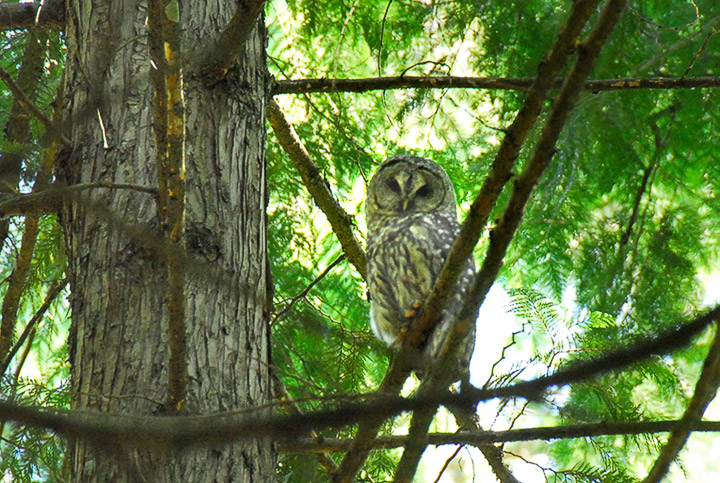 The Barred Owl gets its name from the vertical barring on its lower breast. Its cousin, the spotted owl has, of course, spots rather than bars. Barred Owls hunt by waiting on a high perch at night, or flying through the woods and swooping down on prey: small mammals, rabbits, birds, amphibians, reptiles, and invertebrates.
The Barred Owl gets its name from the vertical barring on its lower breast. Its cousin, the spotted owl has, of course, spots rather than bars. Barred Owls hunt by waiting on a high perch at night, or flying through the woods and swooping down on prey: small mammals, rabbits, birds, amphibians, reptiles, and invertebrates.
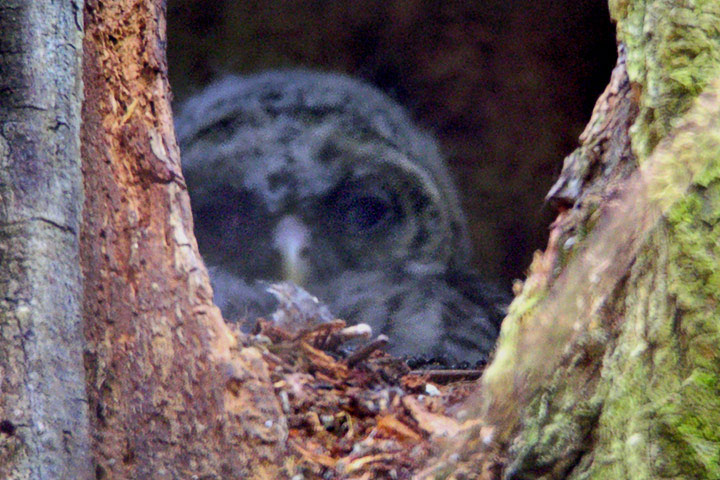 A barely visible Barred Owl chick peaks out from a cavity high in a tree. It is the end of May and it will be some time before this owlet fledges. Its parents now spend a good deal of time feeding it; the detritus of this activity is found on the ground around the tree.
A barely visible Barred Owl chick peaks out from a cavity high in a tree. It is the end of May and it will be some time before this owlet fledges. Its parents now spend a good deal of time feeding it; the detritus of this activity is found on the ground around the tree.
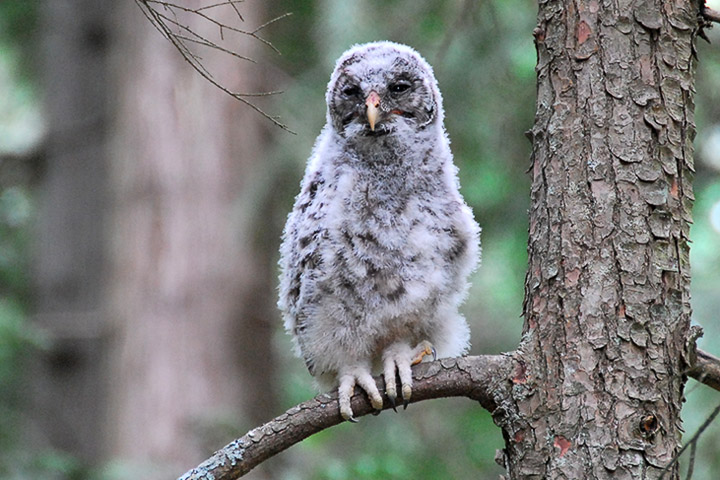 Four days earlier, this Barred Owl chick was in the nest cavity (above). Today it is out on a tree branch, but watched by its parents. It will be many weeks before it is on it own.
Four days earlier, this Barred Owl chick was in the nest cavity (above). Today it is out on a tree branch, but watched by its parents. It will be many weeks before it is on it own.
Great Horned Owl
Bubo virginianus
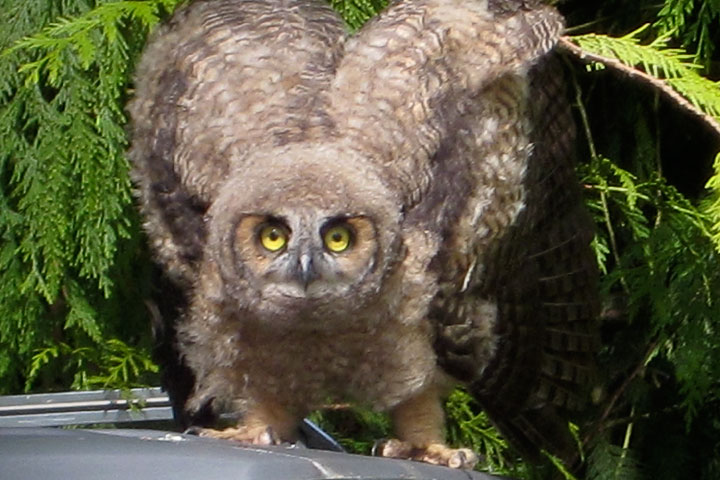 A Great Horned Owl chick takes its first flight only to land on the roof of a truck.
A Great Horned Owl chick takes its first flight only to land on the roof of a truck.  Garry Heuston
Garry Heuston
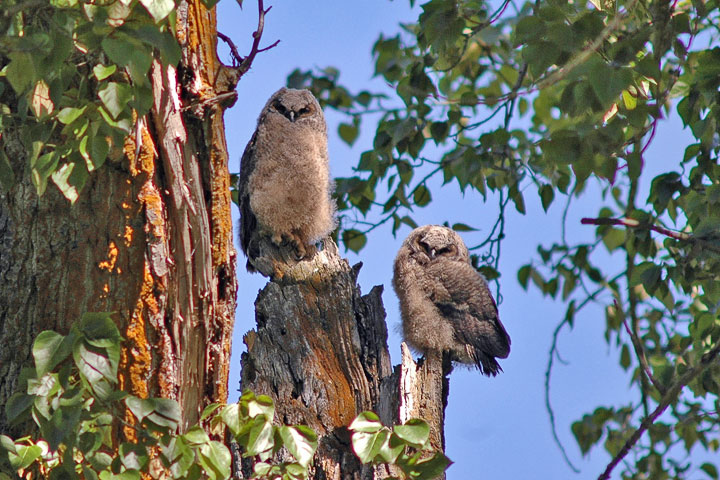 Two recently hatched Great Horned Owl chicks watch from a tree.
Two recently hatched Great Horned Owl chicks watch from a tree.  LVD
LVD
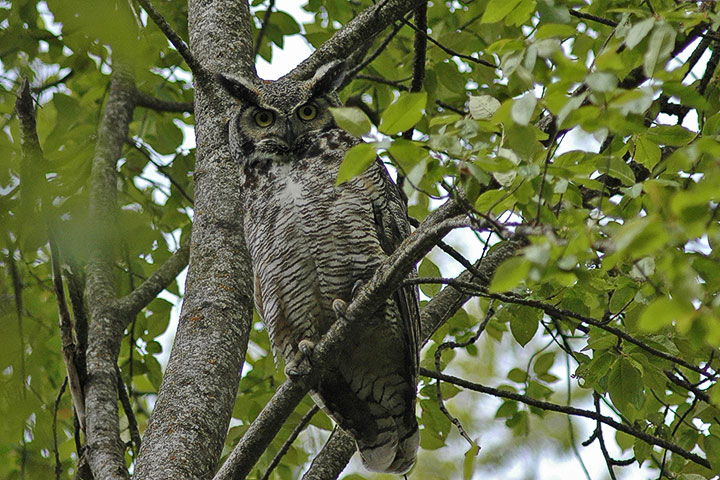 A Great Horned Owl watches from a tree.
A Great Horned Owl watches from a tree.  LVD
LVD
Saw–whet Owl
Aegolius acadicus
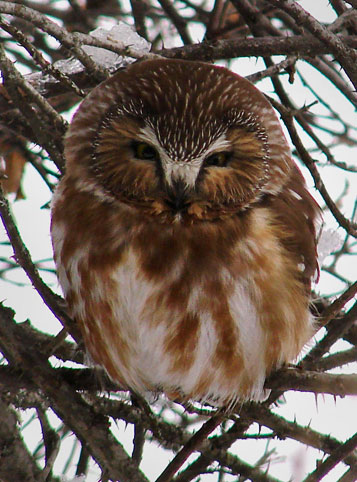 The Northern Saw–whet Owl is found in mature forests where it feasts on mice and voles.
The Northern Saw–whet Owl is found in mature forests where it feasts on mice and voles. Justin Arndt
Justin Arndt
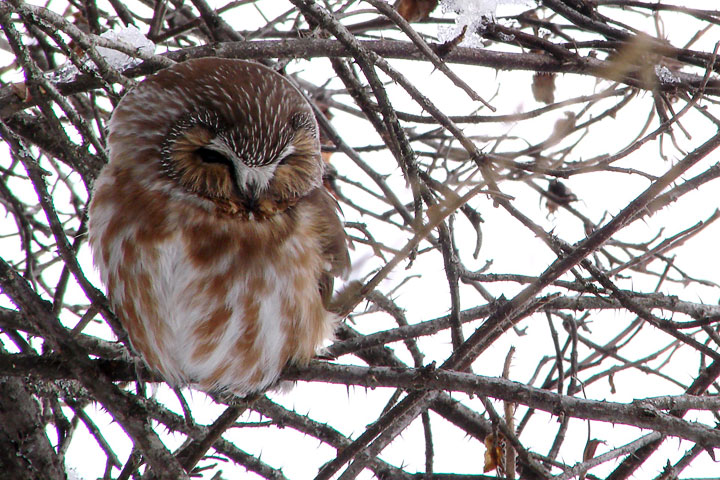 The defence of the Saw Whet Owl upon discovery is to sit still and not fly. This makes it approachable, but does not mean it is tame.
The defence of the Saw Whet Owl upon discovery is to sit still and not fly. This makes it approachable, but does not mean it is tame.  Justin Arndt
Justin Arndt
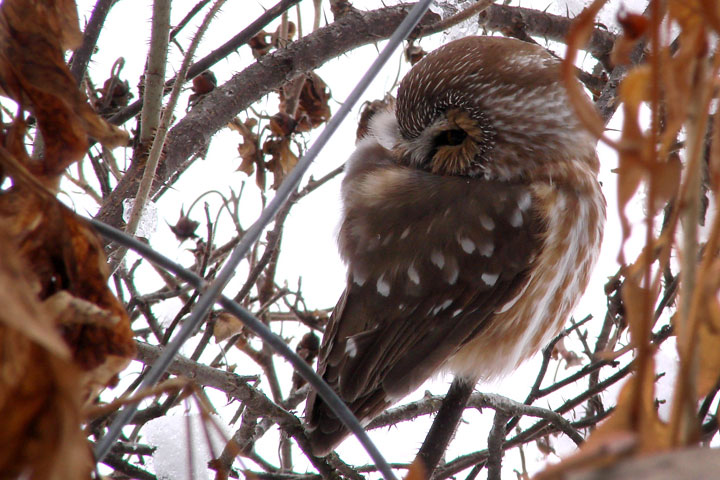 The Saw Whet Owl apparently gained its name from the sound it makes when seeking a mate: a saw being sharpened on a whetstone. This comparison is probably lost on most people these days.
The Saw Whet Owl apparently gained its name from the sound it makes when seeking a mate: a saw being sharpened on a whetstone. This comparison is probably lost on most people these days.  Justin Arndt
Justin Arndt
Northern Pygmy Owl
Glaucidium californicum
 The Northern Pygmy Owl is unusual among owls in that it hunts during the day, typically preying on small mammals, birds, and insects.
The Northern Pygmy Owl is unusual among owls in that it hunts during the day, typically preying on small mammals, birds, and insects.  Justin Arndt
Justin Arndt
 This Northern Pygmy Owl is probably in the third year of its life. It has already moulted the primary feathers on its wings, but not the secondary ones.
This Northern Pygmy Owl is probably in the third year of its life. It has already moulted the primary feathers on its wings, but not the secondary ones.
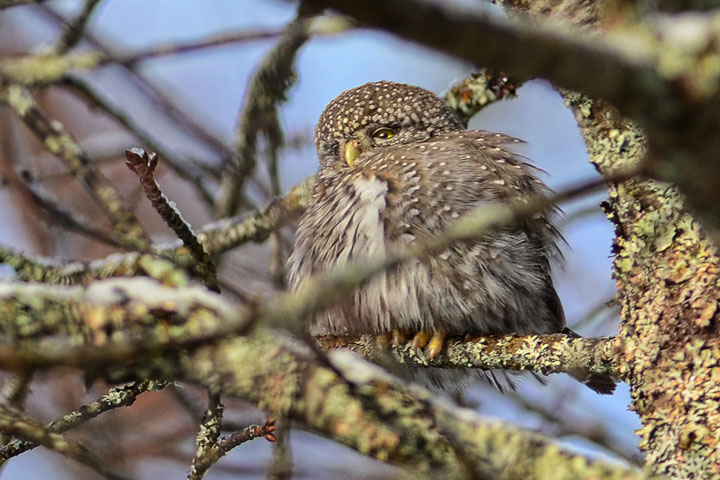 A Northern Pygmy Owl waits and watches from a tree.
A Northern Pygmy Owl waits and watches from a tree.
 A Northern Pygmy Owl has captured a robin and is eating it head first. Often that is all it these owls will eat.
A Northern Pygmy Owl has captured a robin and is eating it head first. Often that is all it these owls will eat.  Marnie Lehr
Marnie Lehr
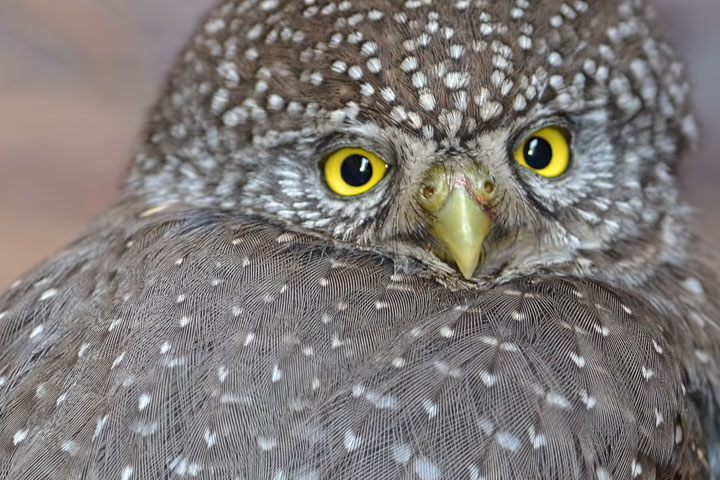 This is a detail from the image to the upper left.
This is a detail from the image to the upper left.
Great Grey Owl
Strix nebulosa
 A Great Grey Owl in flight.
A Great Grey Owl in flight. Catherine Aitken<
Catherine Aitken<
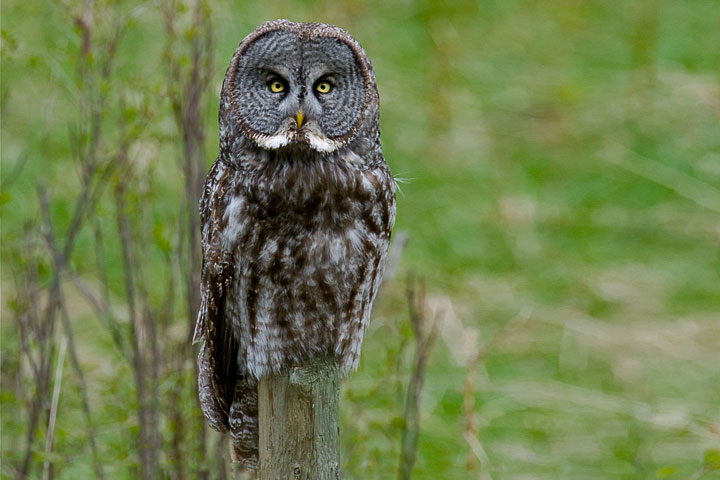 The Great Gray Owl.
The Great Gray Owl.  Catherine Aitken
Catherine Aitken
Information from Wikipedia: Owl, Barred Owl, Northern Pygmy Owl,
Great Horned Owl, Northern Saw–whet Owl.
![]()